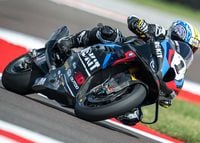Since their introduction almost 35 years ago in the Sabre and Magna, V-4 engines have found homes in a variety of Honda motorcycles, from cruisers to sport-tourers to all-out sportbikes. Scroll through our gallery below to see a timeline of those bikes, from the very first V45 Sabre to the latest Honda with a V-4 engine, the MotoGP-replica RC213V-S, and to learn more about each model.
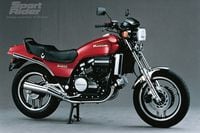
1982 Honda VF750S V45 Sabre
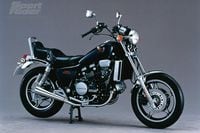
1982 Honda VF750C V45 Magna
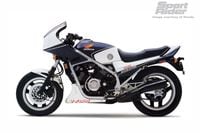
1983 Honda VF750F Interceptor
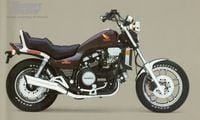
1983 Honda V65 Magna
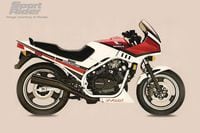
1984 Honda VF500F Interceptor
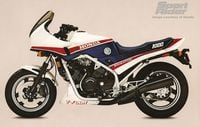
1984 Honda VF1000F Interceptor
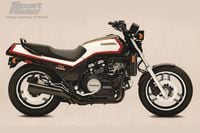
1984 Honda VF1100S Sabre
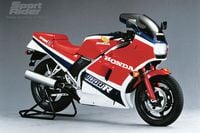
1985 Honda VF1000R

1986 Honda VFR750F
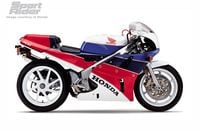
1990 Honda RC30
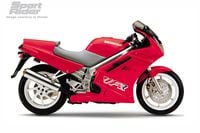
1990 Honda VFR750F
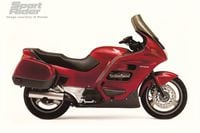
1992 Honda ST1100
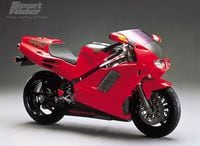
1992 Honda NR750
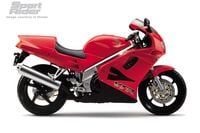
1994 Honda VFR750F
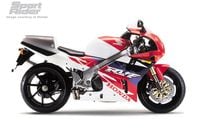
1994 Honda RC45
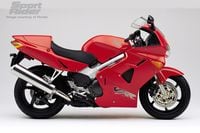
1998 Honda Interceptor
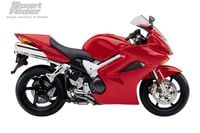
2002 Honda Interceptor
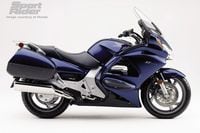
2004 Honda ST1300
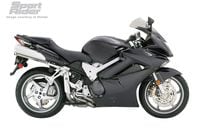
2006 Honda Interceptor
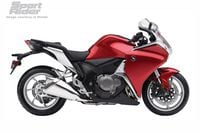
2010 Honda VFR1200F
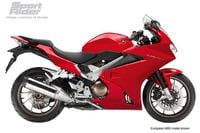
2014 Honda Interceptor
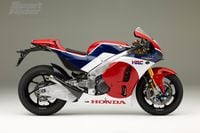
/cloudfront-us-east-1.images.arcpublishing.com/octane/DS3Q5X2VJFFAJDK2PWB3Y7K6U4.jpg)
/cloudfront-us-east-1.images.arcpublishing.com/octane/4KBL4JAMYRFDPEINTWATDUH7OM.jpg)
/cloudfront-us-east-1.images.arcpublishing.com/octane/FXADK3MVSNBRTKJ2B7TPDCCJ5Y.jpg)
/cloudfront-us-east-1.images.arcpublishing.com/octane/M7L2CPXO55FRFMECW7QGDPGP6E.jpg)
/cloudfront-us-east-1.images.arcpublishing.com/octane/T4RWGLAEHVE2VCJZOTFTNGB2KA.jpg)
/cloudfront-us-east-1.images.arcpublishing.com/octane/JM4QGLAHWNGHPM74OEB7FVBFSY.jpg)
/cloudfront-us-east-1.images.arcpublishing.com/octane/BGPNXPDDYBHD3HL6YEZQOYHXTI.jpg)
/cloudfront-us-east-1.images.arcpublishing.com/octane/SND5GGQV4RDPPMZBSBEGIZ4SIY.jpg)
/cloudfront-us-east-1.images.arcpublishing.com/octane/XUDDAPYZMZEL5EDPVDJ2DTULWI.jpg)
/cloudfront-us-east-1.images.arcpublishing.com/octane/M7AU2L6GAVCJVHW57LIRPDAAUQ.jpg)
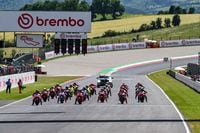
/cloudfront-us-east-1.images.arcpublishing.com/octane/JKEJY7P43JGD5C5NJO2VJQJPUM.jpg)
/cloudfront-us-east-1.images.arcpublishing.com/octane/YROKYJYUQVGPHCEMPTGBWDQCKQ.jpg)
/cloudfront-us-east-1.images.arcpublishing.com/octane/QIHEYR66TZDAPCGMWHCWCBC4XA.jpg)
/cloudfront-us-east-1.images.arcpublishing.com/octane/4FTBMNZL5BD2ZHY62XXRHJW6PI.jpg)
/cloudfront-us-east-1.images.arcpublishing.com/octane/L2BHKRCEMFDF7O3S4REZXPDH2E.jpg)
/cloudfront-us-east-1.images.arcpublishing.com/octane/QHENIV3HMJCTTCXQ6O5YPTNRZ4.jpg)
/cloudfront-us-east-1.images.arcpublishing.com/octane/K3VNQBIAKVGIHIGBRG7QKJYLVI.jpg)
/cloudfront-us-east-1.images.arcpublishing.com/octane/HRU64QXT3NH2DJOFBVI53XIKCE.jpg)
/cloudfront-us-east-1.images.arcpublishing.com/octane/4C5HHSNJCVDZXPIJTCJBVTE2MU.jpg)
/cloudfront-us-east-1.images.arcpublishing.com/octane/HBKK2TCOCZFIBIVKLKZFF5NXLQ.jpg)
/cloudfront-us-east-1.images.arcpublishing.com/octane/23S5ZEY2FBBADHQQK7AKLFDNYM.jpg)
/cloudfront-us-east-1.images.arcpublishing.com/octane/OPF3CNKKLVAN3AHQWD22DPWLEQ.jpg)
